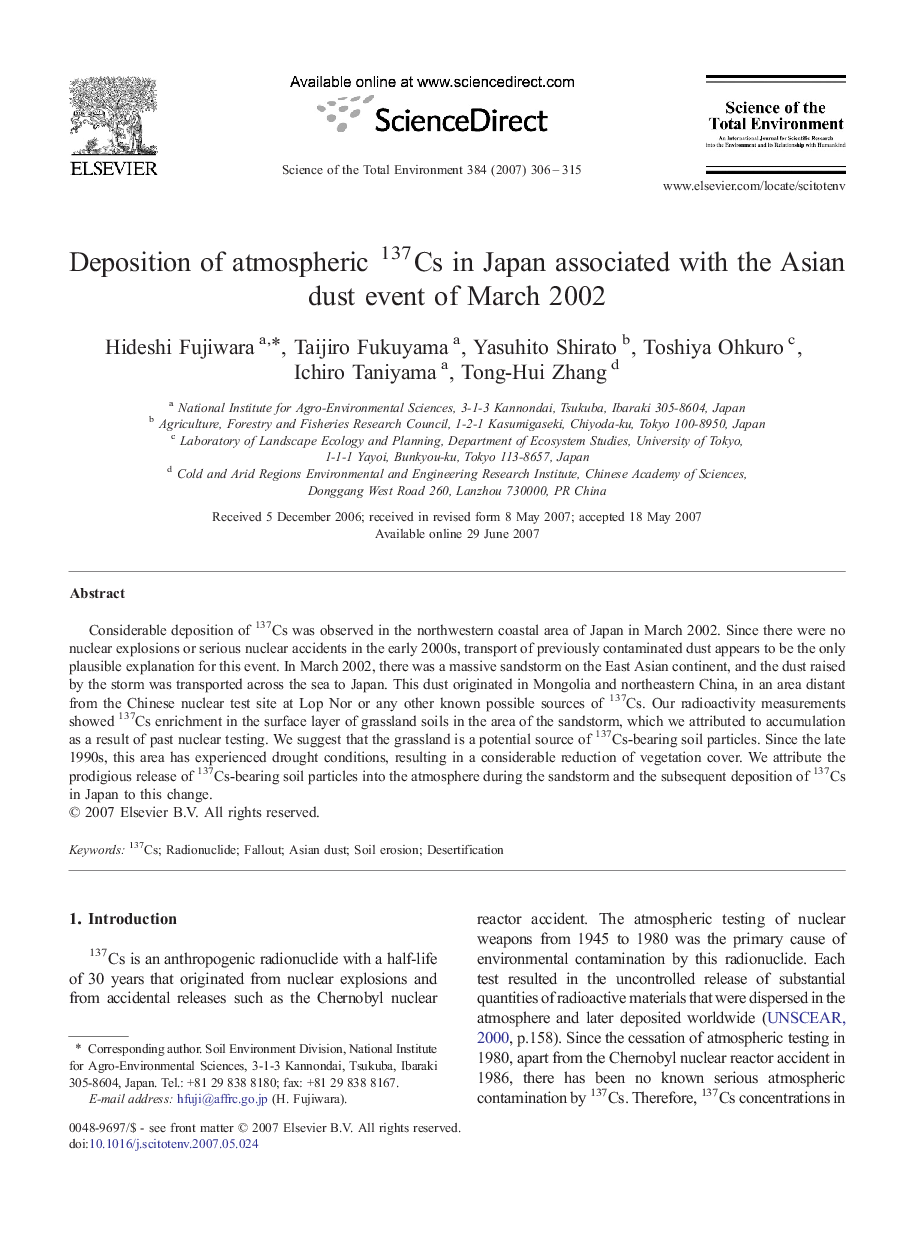| Article ID | Journal | Published Year | Pages | File Type |
|---|---|---|---|---|
| 4432877 | Science of The Total Environment | 2007 | 10 Pages |
Considerable deposition of 137Cs was observed in the northwestern coastal area of Japan in March 2002. Since there were no nuclear explosions or serious nuclear accidents in the early 2000s, transport of previously contaminated dust appears to be the only plausible explanation for this event. In March 2002, there was a massive sandstorm on the East Asian continent, and the dust raised by the storm was transported across the sea to Japan. This dust originated in Mongolia and northeastern China, in an area distant from the Chinese nuclear test site at Lop Nor or any other known possible sources of 137Cs. Our radioactivity measurements showed 137Cs enrichment in the surface layer of grassland soils in the area of the sandstorm, which we attributed to accumulation as a result of past nuclear testing. We suggest that the grassland is a potential source of 137Cs-bearing soil particles. Since the late 1990s, this area has experienced drought conditions, resulting in a considerable reduction of vegetation cover. We attribute the prodigious release of 137Cs-bearing soil particles into the atmosphere during the sandstorm and the subsequent deposition of 137Cs in Japan to this change.
